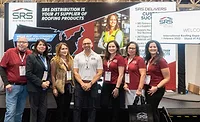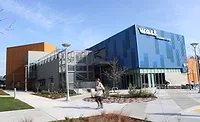Metal Roofing: Making a Statement with Accessories
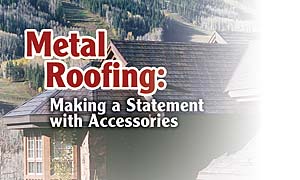
Accessories certainly have their place in fashion, but in roofing their status is often less, well, elevated. Valleys, trim, dormers, vents — all have important parts to play in the life of a roof and seem to be getting more attention as homeowners invest more in their residences (See Roofing Contractor, July 2003, pg. 35). Rather than robbing a metal roof of its clean lines or addressing mechanical elements below, accessories are being sought rather than avoided in metal roofing systems. In fact, metal accessories can give new looks to a variety of roofing systems and help set them apart from the pack.
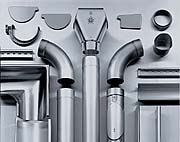
Higher Education
Met-Fab Manufacturers LLC of Jessup, Md., produces complete metal roofing systems that are winning a lot of custom work for high-end, high-slope projects, particularly in residential and institutional markets. Bill Chandler, general manager, has been taking advantage of an expanding educational market in new construction and retrofit. He cites a recent spike in sales of custom cornice work on its projects.“Universities seem to be going crazy over this,” Chandler says. “We’ve always done them and this year it seems to be a lot more focused.”
With an eye for enduring quality and low maintenance, Chandler also sees higher education looking more for greater impact, in aesthetics and dollars. While the metal panels themselves are generally earth tones that blend with the stone and brickwork, aspects like curved or boxed cornices accent the building enough to make a subtle statement to students, parents, alumni and faculty. Accessories that don’t sharply contrast from the building may not even register on the conscious level but add to an overall appearance of veneration.
The company offers standing-seam panels, metal shingles and a universe of components to accompany them, including trim, louvers, sealants and even a rubberized underlayment. It’s obviously advantageous to have a single source and warranty for all roofing components, but Met-Fab is equally willing to supply separate components for a particular project. The company has been fabricating more copper roofs lately and has done its share of demanding specifications like eyebrow dormers or through-wall flashing.
“It makes you more flexible for the contractor,” says Chandler. “What they can’t make, we’ll make for them. It’s helping them expand and look at parts of the construction project they never would have looked at before.”
Sometimes accessories illustrate the need for customers to be further sold on the aesthetics of metal roofing. It seems that elaborate gutters or architectural features help give standing-seam metal roofs more distinction from the industrial feel that many customers still associate with metal panels. Since typical metal roofing consumers aren’t so price sensitive, attention to such details don’t have the budget limitations seen on so many projects and sometimes the sky’s the limit. Recently the company fabricated a 1,000-square-foot standing-seam barrel roof made out of stainless steel, an enormously expensive material to make panels from.
“It’s going to be a statement,” he says. “That’s what I like about this company. We’ll try anything.”
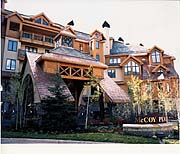
High End
Other accessories are not so noticeable or play a more supporting role in the aesthetics of a roof. Vail Metal Systems actually developed its patented design to address design restrictions in exclusive resort communities of Colorado while making sure it had the features to survive the Rocky Mountain winters. It seems that the large volume of snow there that makes skiers happy also creates freeze/thaw cycles that were cracking concrete tiles. Standing-seam and painted metal roofs were prohibited in communities like Beaver Creek Resort, which modeled itself after the European Alpine resorts and the rectangular shapes of slate and wood shakes. So, Plath Construction in Vail developed a process for making copper shingles in three-foot panels that looked like four separate shingles.“We actually fold seams in the metal so it truly looks like somebody installed four shingles,” says Pat Warren, a partner in the company. He added that the patented design causes head scratching at trade shows. “Half the questions we get are, ‘How did you get those shingles together?’”
Accessories like rake edges, valleys, and hip-and-ridge trims are integral components to the look and function of the system. The individual panels create the aesthetics of individually stamped shingles while the components encapsulate the system to create a tight seal. Shingles slip into one another and sleeves in the valley fold into the ends for a fully integrated system.
“There are no cut edges exposed to the weather and that is unique. It’s a fully trimmed and rolled system,” says Warren. “All the trim accessories are meant to capture water and drain it out of the system.”
The system was licensed to Owens Corning three years ago, but it recently terminated the licensing agreement. Warren won’t divulge numbers but says that Owens Corning had success with the product, however bankruptcy proceedings there have compelled the company to concentrate on core businesses. So Vail Metal Systems is back in production with the Riva Series while seeking licensees regionally.
The company is also exploring new design opportunities geared toward both ends of the market. For price sensitive projects, the company offers 26-gauge Galvalume shingles. For more discerning clientele, Vail Metal Systems is also exploring features such as embossed panels and two-tones that mimic competing roofs. Such “accessorizing” is expected to broaden the customer base.
“We are very excited about our two-color blend,” says Warren. “We will be able to offer our customers a metal roof that has real color contrast and dimension. A two-color product will dramatically expand the acceptance of metal roofing as a residential roofing alternative.” The influence of the design has spread throughout the area and beyond so that he sees an ever-expanding market for attractive, durable roofing that makes a statement. He cites studies about aging baby boomers spending more on their homes and having an eye for quality. “There seems to be a real trend towards value and versatility,” he adds. “People are looking at their roofing system as an investment rather than an expense.”
Gutter Tech
Sometimes the roofing accessories aren’t just for metal roofs, but incorporated into a variety of roofing systems to enhance curb appeal or address longevity concerns. Rheinzink America Inc., Cambridge, Mass., has been making inroads by offering elaborate gutter and downspout systems made from its zinc alloy“Our gutter systems are extremely elaborate. They’re high end but they lend themselves to many architectural styles,” says Gary McKee, regional technical sales manager for Rheinzink. “Once you look at the gutter system, it looks like a Swiss watch. People don’t typically look at gutters and downspouts as art, but that’s essentially what they are.”
Zinc has successfully waterproofed European buildings for the last 500 years and the trend toward enduring quality has made significant progress in American architecture. Zinc as a roofing membrane is among the most expensive materials around, thanks in part to the need to support the pliable material. Yet that malleability gives designers more options to create, say, compound curves or elaborate details that enhance any project. Whether it’s accents that are cast, panels that are roll formed at the job site or diamond-shaped shingles hammered into place, the flexibility of zinc is both physical and aesthetic.
“It lends itself to more unique designs,” says McKee. “We’re giving an option to clients that they haven’t experienced before.”
The blue gray tone of zinc offers a unique warmth and timeless look, one that transfers readily to accessories. Certainly the roofing industry is familiar with the weathering properties of zinc (from galvanized metal to fungus-resistant shingles) so Rheinzink America is helping roofing contractors and designers take the next step by incorporating more of it into traditional roofing systems. Since this natural metal has strict design considerations (ventilation is a must, copper must be avoided), much of the thrust is through the design community.
“What’s driving the sales is the architect. This is such a high-end product that it has to be specified,” explains McKee who was recently hired to service a growing market in the West, particularly institutional buildings that are designed for the ages. “They only want to do this once. That is where zinc makes the most sense.”
So new markets for even the most venerable materials can be found and accessories can pave the way, even if it’s only gingerbread trim for an exclusive home. These inroads can be capitalized upon while exploring new looks. McKee says that the company is looking at different hues like a graphic gray to further extend the appeal of the roofing system. In the meantime, Rheinzink is pleased to play any role — even a supporting one — in the current wave of high quality roofing projects.
“You can have a regular building and use a small quantity of zinc that sets it off from the rest,” he says. “Those who do are making a statement: ‘Look at me. I’ll be here a long time.’ A legacy. That’s what they’re creating.”
Looking for a reprint of this article?
From high-res PDFs to custom plaques, order your copy today!



